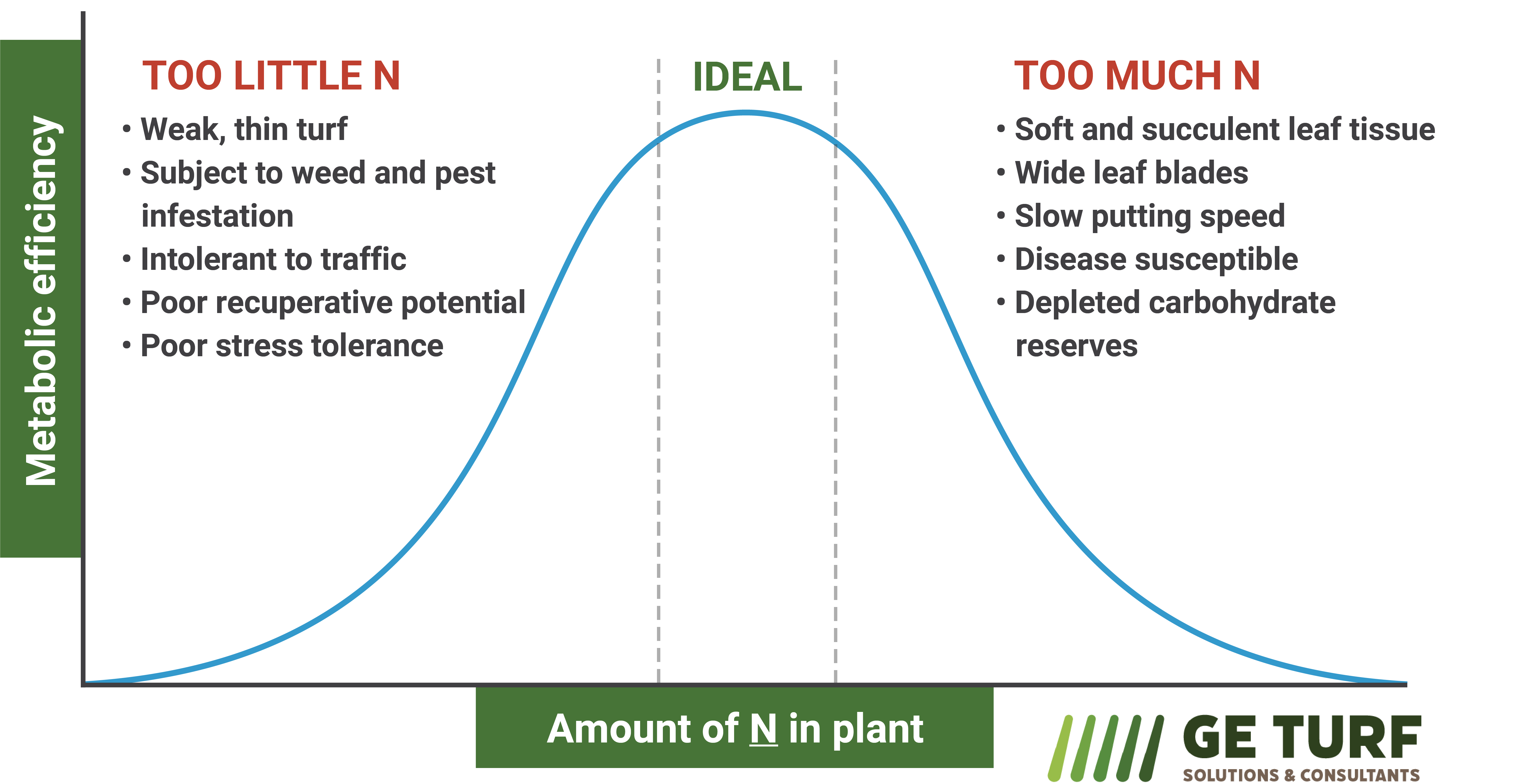Highly-managed turf requires a weather dependent “ideal” amount of internal nitrogen for metabolic equilibrium… not too much and not too little. This ideal amount allows the plant to maximize its own stress defense, disease tolerance, wear tolerance, texture and overall plant health.
Unlike farming crops, finely-mowed turf is not about increasing its upward yield potential; but conversely, it is about minimizing the upward yield to allow building a stronger downward root reserve system.
COMMON SIGNS OF TOO LITTLE OR
TOO MUCH PLANT ABSORBED NITROGEN:
- Fungicide applications are not lasting their maximum time intervals
- Increased disease pressure
- Roots are thinning and retracting
- Growth regulators are needed to slow down vertical growth and improve turf texture
- High organic material levels in top one inch of sample
Maximizing Internal Metabolic Efficiency in finely-mowed turf

TOO LITTLE N – If there isn’t enough nitrogen in the plant, then it cannot keep up with the demand for the “protein life building blocks” of amino acids, which are critical for stress defense and recovery.
CARBOHYDRATES + N(S) + ATP –> AMINO ACIDS + mRNA –> PROTEINS
TOO MUCH N – If the amount of nitrogen absorbed in the plant is too much, then the plant will pull from its carbohydrate root reserves to grow vertically upward to capture more sunlight to produce enough carbohydrates to combine with the excess nitrogen.
Unfortunately, when the turf is frequently mowed low, the plant can not capture enough sunlight for making carbohydrates and is forced to continuously rob these carbs from its root reserves, decreasing its defenses and diminishing its health. This situation also exacerbates disease infections.
